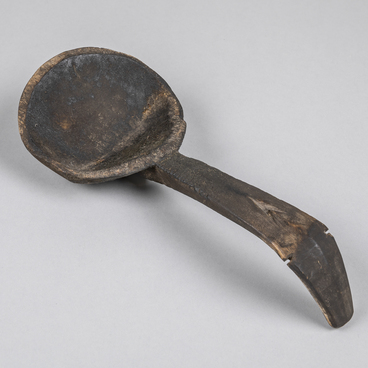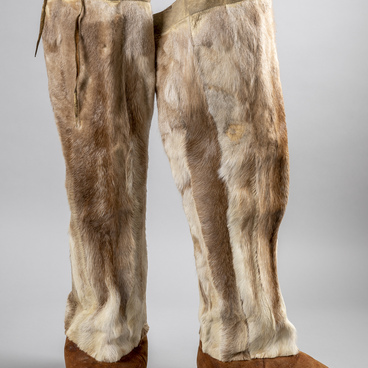Khanty who live on the banks of the Yugan River near Surgut wear such shoes. These light, comfortable and warm boots made of deerskin or suede (rovduga) are called “nyriki”.
There are men’s, women’s and children’s nyriki boots. They differ in size, pattern and color scheme: those made for children and women can be of a brighter color, while men’s boots have more neutral colors.
Making such boots is not easy, however, for the skilled craftswoman it is not a problem. First, the skin of a deer or elk is soaked in water to make removing loose hairs easier. After that, the skin is dried, tumbled and fleshed. During the latter stage all subcutaneous material is removed.
The craftswoman leaves part of the skins unpainted. To the rest, she applies a special vegetable paint to achieve a brown color. To do this, she boils chopped larch bark and burnt birch chaga (a species of fungus) for a long time, adding soot and fish oil to the hot decoction. Then the elements of the shoe and parts of the future pattern are cut from the well-tanned and soft leather on a special board with a small sharp knife.
Each craftswoman has her own templates made of birch bark. All the details on the surface of the leather are distributed sparingly: every piece of the pelt has a purpose. Two wide rectangles with rounded corners are cut out to make the soles. The soles for the right and the left boot are identical.
A flat wooden splinter covered in vegetable paint is used to apply the pattern to the toe of the shoe. When the paint has dried, the pattern is outlined by sewing a white hair from a deer’s neck — called a “beard” — with very thin tendon threads. This element makes it appear as if the pattern is edged with very small white beads.
Nyriki boots have a flat sole, a round toe and a long bootleg. Between the foot of the boot and the long fabric calf is a rectangular strip with a geometric pattern assembled from elements of colored and non-colored leather. The mosaic fragments of the pattern are sewn from the inside with thin tendon threads using zigzag stitches. The stitches at the front are so finely and carefully done that the mosaic parts blend in with each other almost seamlessly.
At the base of the boot in the front is the so-called “amulet against blindness” — this is a triangular wedge made of deerskin. It is sometimes made of red fabric. The high soft calves are fastened with straps to special belt fasteners on the belt.
In recent years, craft items, such as these boots, are very rare and almost completely replaced by factory-made products.






